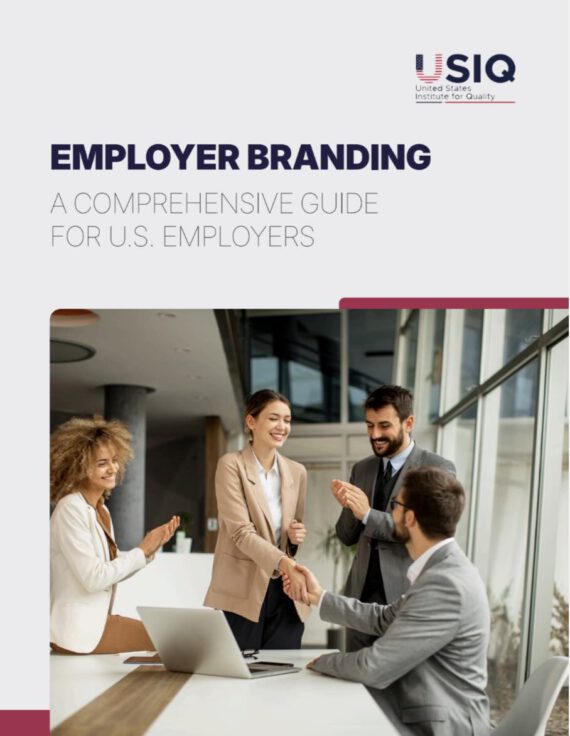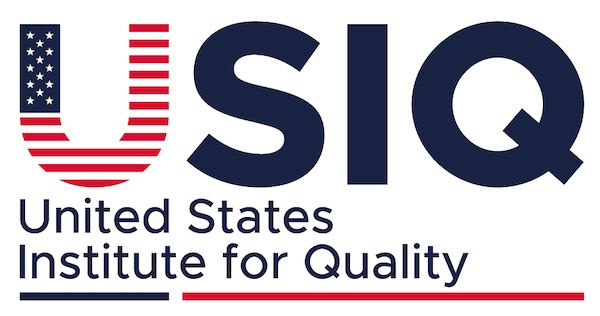|
Getting your Trinity Audio player ready...
|
In this section, the term employer branding is defined and the objectives, employer branding process, and employer branding goals are discussed. Finally, you will find a summary of employer branding with recommendations for action for employers.
1. Definition of the Term Employer Branding
Employer branding is a strategic concept in HR marketing that aims to position a company as an attractive employer (Esch et al., 2016, p. 2-4). It encompasses all measures aimed at developing and strengthening an employer brand and communicating it both externally and internally. Employer branding is intended to positively influence the perception of the company as an employer and thus attract and retain qualified talent in the long term (Backhaus & Tikoo, 2004, pp. 505-506).
The concept of employer branding combines elements of traditional brand management and HR marketing. It is not only about a company’s public image but also about the internal perception of employees. Strong employer branding helps strengthen employees’ identification with their company, increase their motivation, and reduce staff turnover (Edwards, 2010, pp. 8-10).
1.1. Profiling the Employer
A central element of employer branding is profiling as an employer (employer brand). This involves creating a clear and differentiating employer image that emphasizes a company’s strengths and uniqueness.
Companies must clearly communicate their values, culture, working conditions, and career opportunities to stand out from the competition. At the same time, the corporate culture being lived should be in line with what is communicated (Busold, 2019, p.62).
A strong and consistent employer image helps ensure that potential applicants perceive the company as an attractive employer and choose to work there (Ambler & Barrow, 1996, pp. 185- 187). Profiling as an employer also includes identifying and communicating the company’s unique selling points (USPs). These USPs can include innovative projects, a positive working culture, flexible working models, or special training and development opportunities. Clearly communicating these USPs helps to attract and retain the interest and attention of potential applicants (Mosley, 2014, pp. 201-203).
1.2. Personality and Unique Brand Identity
Another key component of employer branding is the creation of a strong personality represented by a unique brand identity. This means a company must develop a distinctive identity that is communicated consistently and authentically both internally and externally. A strong brand identity helps generate an emotional bond between a company and its employees as well as potential applicants (Lievens & Slaughter, 2016, pp. 407-409).
Creating a unique brand identity requires a clear definition of core values and corporate culture. These values and the culture must be lived and communicated throughout the company. Authentic and consistent communication of the brand identity helps strengthen employee trust and loyalty and position the company as an attractive employer (Sullivan, 2004, pp. 501- 503).
2. Employer Branding Goals
Employer branding involves pursuing various objectives aimed at positioning an employer as attractive and, thus, retaining the best talent in the organization and attracting new employees (Kaning, 2016, p.134).
Employer branding goals can be divided into conative, cognitive, and affective. Conative goals relate to the behavior of potential and current employees. They include influencing the behavior of target groups, e.g., those applying to the company or remaining within the company.
Cognitive goals relate to the knowledge and perception of target groups. They aim to increase awareness of the company as an employer and convey a positive employer image. Affective goals relate to the emotions and attitudes of target groups. They aim to generate positive emotions toward the company and strengthen emotional loyalty (Mosley, 2014, pp. 167-169).
A company must also communicate its strengths and benefits to the outside world to be perceived as an attractive employer. This can be achieved through various marketing measures, including career pages on the company website, social media campaigns, and participation in career fairs. Authentic insights into everyday working life and employee success stories can appeal to potential applicants and reinforce a company’s positive image (Edwards, 2010, pp. 7-10). Participating in employer competitions and obtaining certifications like “Top Employer” can enhance a company’s reputation. These awards serve as a seal of quality and can convince potential applicants to choose the winning company. However, Naundorf (2016) emphasizes the need to critically question the significance of these awards and ensure they are based on objective and reliable criteria.
2.1 Building an Employer Brand
Building an employer brand serves to differentiate an employer (Kaning, 2016, p. 138). A strong employer brand helps to position a company as an attractive employer and to differentiate itself in the competition for talent (Esch et al., 2016, pp. 16-18). An employer brand encompasses all the characteristics and features that make a company unique as an employer. These include the corporate culture, values, working conditions, and career opportunities. A strong and consistent employer brand helps gain employee trust and loyalty and increases the attractiveness of a company to potential applicants (Backhaus & Tikoo, 2004, pp. 516-518).
2.2 Building Trust
Building trust is a key objective of employer branding. Trust plays a crucial role in the decision of potential applicants to apply to a company and in the choice of current employees to stay with a company. A strong employer brand based on honesty, transparency, and reliability can gain employee and applicant trust. This can be achieved through clear and consistent communication of company values and goals, transparent recruitment processes, and an open corporate culture (Lievens & Slaughter, 2016, pp. 411-413).
2.3 Minimizing the Risk of Choosing an Employer
Another important goal of employer branding is to minimize risk when choosing an employer. Potential applicants are often faced with uncertainty as to whether a company genuinely meets their expectations and requirements. A strong and transparent employer brand can help reduce this uncertainty by providing clear information about the company and working conditions. This can be achieved through authentic insights into everyday working life, employee reports and testimonials, and clear and honest communication (Ewing et al., 2002, p. 6- 8).
3. The Employer Branding Process
Employer branding is a strategic process that requires careful planning and implementation to achieve the desired goals. The process involves several steps, including analyzing the current situation, developing an employer branding strategy, implementing measures, and continuously evaluating results (Ewing et al., 2002, pp. 3-5).
3.1. Analysis
Analyzing the current situation involves examining the internal and external perception of a company as an employer. This can be done through employee surveys, focus groups, and competitor analyses. Based on this analysis, an employer branding strategy is developed that defines a company’s objectives, target groups, key messages, and measures. The strategy should aim to emphasize a company’s strengths and at the same time address the needs and expectations of target groups (Backhaus & Tikoo, 2004, pp. 514-515).
3.2. Implementation
Implementing employer branding measures involves various activities, including career page design, the use of social media, participation in career fairs, and implementing internal communication campaigns. It is important that all measures are consistent and authentic to ensure the credibility and effectiveness of an employer brand (Mosley, 2014, pp. 187-189).
3.3. Continuous evaluation
The continuous evaluation of employer branding activities is crucial to measure the success of measures taken and to make adjustments where necessary. This can be done by analyzing key figures like applicant numbers, employee satisfaction, and fluctuation rates. Regular strategy reviews and adjustments ensure that employer branding is successful in the long term and contributes to the achievement of corporate goals (Edwards, 2010, pp. 9-11).

Learn more about: Employer Branding
4. Summary for the Term: Employer Branding
Employer branding has become established as a key element in HR management over the last few decades. It encompasses all measures aimed at positioning a company as an attractive employer and, thus, attracting and retaining qualified talent in the long term. The core of employer branding lies in the development of a strong employer brand that communicates a company’s values, culture, and benefits, thus positively influencing the perception of the company among potential and current employees (Backhaus & Tikoo, 2004, pp. 512-513). Employer branding measures can be divided into several categories, each of which pursues specific goals and involves different approaches.
A central measure in employer branding is the development and maintenance of a positive corporate culture. This includes creating a working environment that reflects a company’s values and visions and in which employees feel comfortable and motivated. Internal communication plays a crucial role in this. Regular employee appraisals, feedback sessions, and transparent information flow help strengthen employee trust and promote an open corporate culture (Mosley, 2014, pp. 63-65).
The targeted use of online and offline communication tools plays a central role in achieving these goals. Social media, career pages, and employee videos and testimonials are effective means of strengthening an employer’s brand and achieving desired goals (Sullivan, 2004, pp. 502-504).
By implementing a comprehensive employer branding strategy, a company can increase its attractiveness as an employer, gain the trust and loyalty of employees and applicants, and minimize applicant risk when choosing an employer. This helps to ensure a company’s long-term competitiveness and success. In this context, it is important to take a closer look at employee retention, as this is also an objective of employer branding.
Sources:
- AMBLER, T. / BARROW, S. 1996 The employer brand. Volume 4. in Journal of Brand Management 4 (3).
- BACKHAUS, K. / TIKOO, S. 2004. Conceptualizing and researching employer branding. In Career Development International, 9 (5).
- BUSOLD, M. 2019. war for talents. Success factors in the battle for the best. Wiesbaden: Springer Verlag.
- EDWARDS, M. R. 2010. An integrative review of employer branding and OB theory. In Personnel Review, 39 (1).
- ESCH, F. / BAUMGARTL, C. / STAHL, M. / JAEGER, A. 2016. Employer branding: Attracting the right potentials. In: Esch, FR. Handbook of brand management. Springer Reference Wirtschaft. Wiesbaden: Springer Gabler.
- LIEVENS, F. / SLAUGHTER, J. E. 2016. Employer image and employer branding: What we know and what we need to know. In Annual Review of Organizational Psychology and Organizational Behavior, 3 (1).
- MOSLEY, R. 2014. Employer Brand Management: Practical Lessons from the World’s Leading Employers. Wiley.
- NAUNDORF, J. 2016. Significance of employer award results. Dissertation, Otto-von-Guericke University Magdeburg. Munich: Rainer Hampp Verlag.
- SCHARFENBERG, O. 2023. Digital Employer Branding and Recruiting with Google and YouTube.
- SÜß, M. 1996. corporate image and its effects. Journal of Business Administration, 66 (2).
- TROMMSDORFF, V. 2004. consumer behavior. Stuttgart: Kohlhammer Verlag.
Related Articles
Business operations now experience a revolutionary change through Artificial Intelligence (AI), which creates more efficient, intelligent, and competitive operational processes. [...]
When starting a business, there are many decisions to make, and one of them happens to be selecting a business [...]
A good CV is an essential tool used in the job search since this document provides the first impression of [...]
Creating a powerful employer brand on a shoestring is possible by following a few steps, thinking outside the box, and [...]





